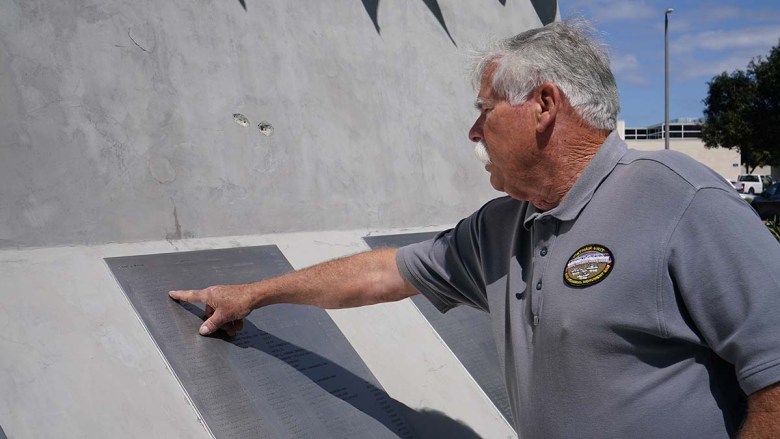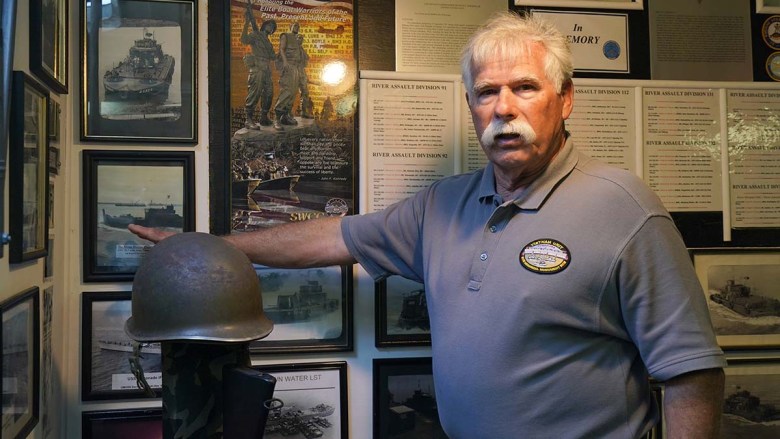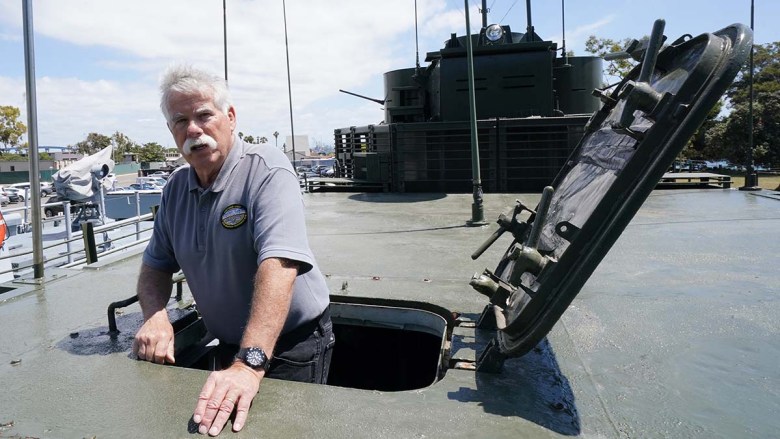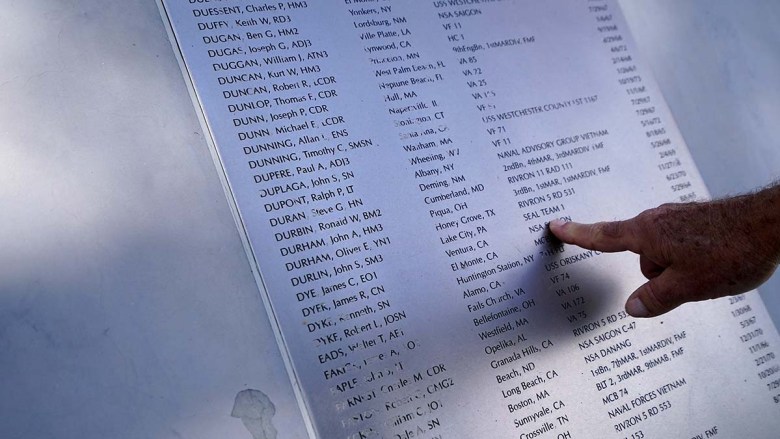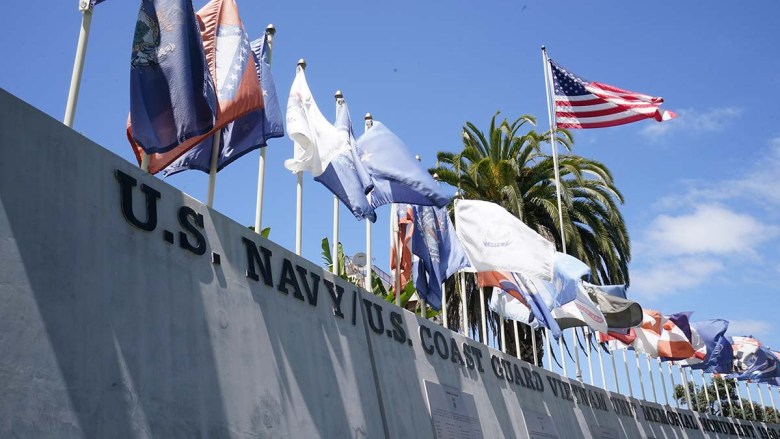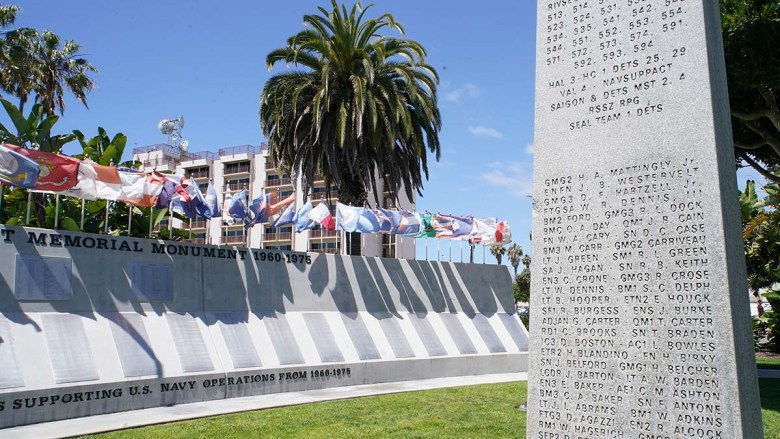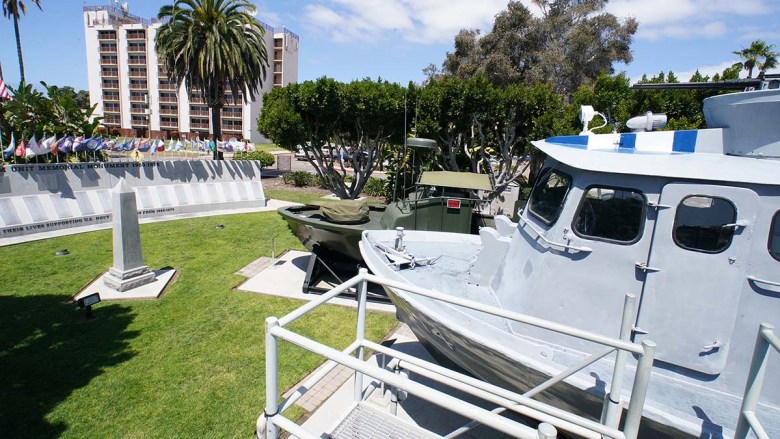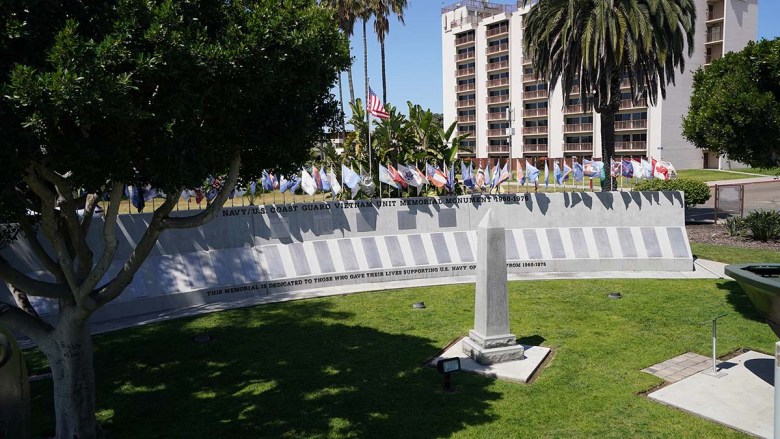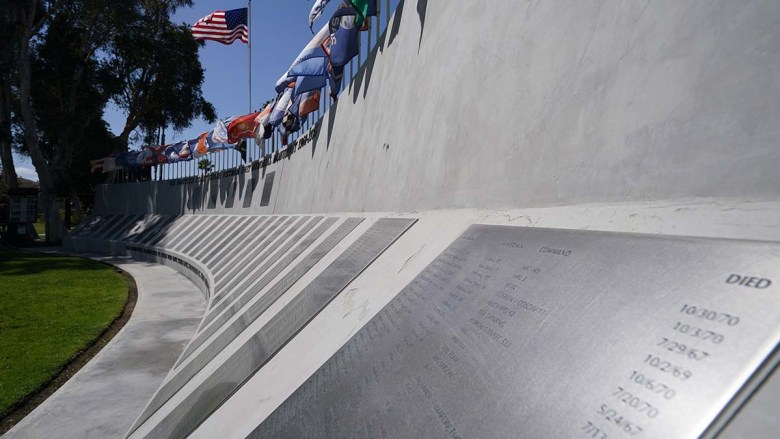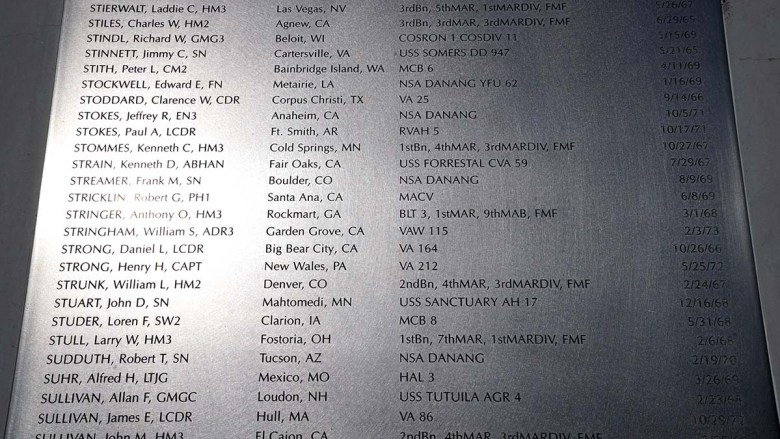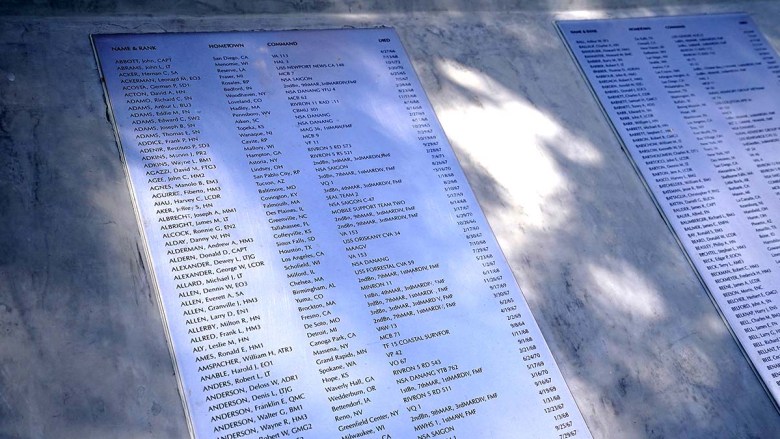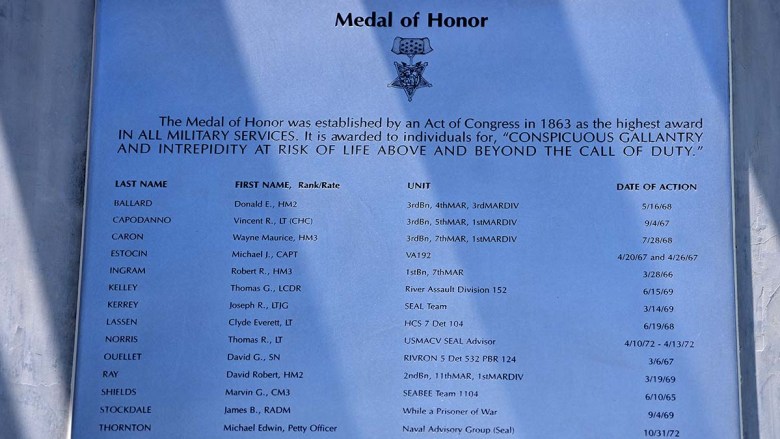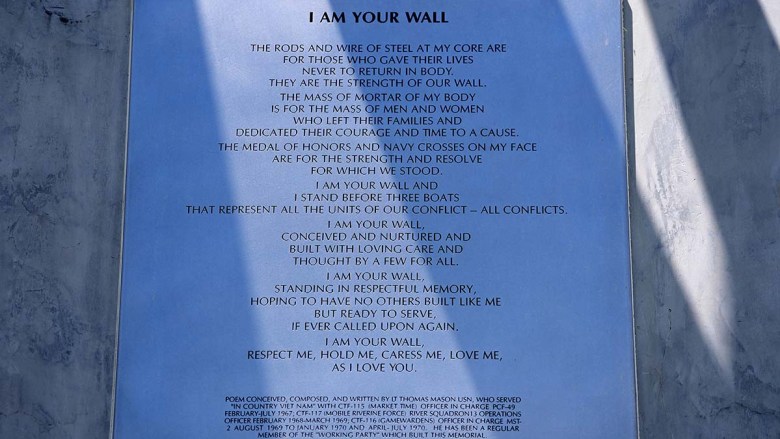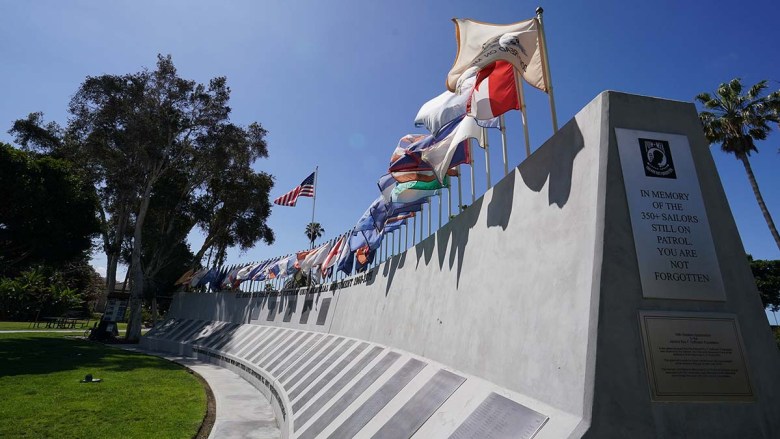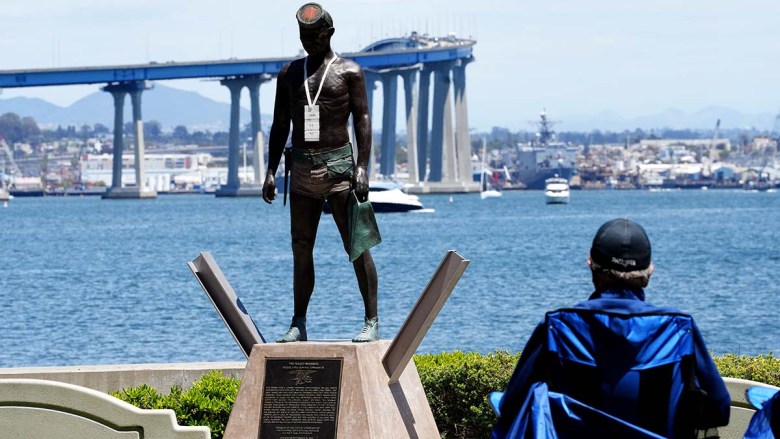Retired SEAL Chuck Chaldekas is flying with Honor Flight San Diego this weekend to see military memorials in Washington, D.C., and connect with his brotherhood.
But on his mind will be a lesser-known monument in Coronado — one that honors 2,564 fallen Navy and Coast Guard members who served in Vietnam, which he thinks deserves greater national attention.
The 76-year-old Coronado resident plans to meet with the director of the Vietnam Veterans Memorial to seek support for maintenance of the Vietnam Unit Memorial Monument on Naval Amphibious Base Coronado.
About 90 former Navy SEALs, underwater demolition members and boatsmen from the Vietnam War era are the latest veterans group to make the three-day trip to D.C., starting Friday to honor their former counterparts and receive a jubilant homecoming at the airport Sunday.
The Coronado monument consists of a curved wall with 26 plaques, each with 100 names of sailors and Coast Guard members who died during the Vietnam War.
A memorial obelisk and display of three styles of military boats used in that war also are there.
Chaldekas is president of the monument board of directors. A small staff maintains the grounds and gives tours. Graduations of new Special Warfare Combatant crewmen and changes of command take place there.
It is of educational and historical significance to honor and remember fallen brothers, Chaldekas said.
The concept for the project was an idea from a long-haul trucker who served two tours in Vietnam as a PBR sailor.
He thought military buddies who didn’t make it back alive deserved to be honored and spoke to fellow veterans about it. Eight years later, after 50 men gathered information and materials, the monument was established in May 2005.
Refurbishing Watercraft
Looking forward, Chaldekas wants to build a kiosk to honor 2,600 members of the 9th Infantry Division who played an integral part in their missions in Southeast Asia.
He also needs funding to refurbish the three displayed watercraft — Patrol Craft Fast (also known as Swift boats after the manufacturer), a River Patrol Boat and a Command and Control Boat.
All are on loan from the Heritage and History Command to the Mobile Riverine Force Association, Swift Boat Sailors Association of America, and Game Wardens Vietnam to the Future.
Of special interest to Chaldekas are three names on the plaques, members of Echo platoon of SEAL Team 1 who served with him and didn’t return home alive.
“That’s my reason for being here,” he said in an interview this week.
He regularly keeps in touch with the families and fulfilled a promise to visit their graves back East.
Camaradie with his fellow retired SEALs is what Chaldekas most look forward to this weekend in Washington.
Although members of classes of two SEAL group have met together regularly for lunch over the years, he hasn’t seen other members of his brotherhood in many years.
“When you go through the type of training that we went through, and you experience the things in combat or everyday work, you develop a family-type situation,” he said.
Seeing his SEAL Family
This weekend, he said: “I’m going to see family members.”
“There are lot of things that most people don’t see or hear about that we know about, and that’s what keeps us together with a close hold.”
What were Chaldekas’ SEAL tours like?
“My job is like your vacation,” he said.
“Who is paid to go dive in the ocean and see all the denizens and great sights under water? Who gets to jump out of airplanes? Who is required to do physical training for an hour to two hours every morning and then take off for a run on the beach?”
He asks: “Is that a job or is that a vacation? We all enjoyed the jobs that we did. Sometimes you get into tight situations now and again in applying your trade, but everybody has a problem with that now and again.”
That was not Chaldekas’ first plan.
‘Job I Enjoyed Most’
He intended to serve in the Navy for two years, seeing sights his father had viewed in his military duty.
But one day in the Plan of the Day, Chaldekas saw a message that said the Navy needed people to jump out of airplanes, run down the beach and swim in the ocean.
“I fancied myself an athlete,” he said. “Twenty-five years later, I retired from the Navy doing the job that I enjoyed most in life — and I have the scars to prove it.”
He has suffered from ischemic heart disease and has had 13 surgeries.
Another major part of the Coronado monument are the Vietnam-era Navy boats.
When the U.S. entered the Vietnam War, he said, a shortage existed of the types of boats needed to patrol the Southeast Asian coast and rivers and tributaries.
Coast Guard members were needed to precede other troops because they had usable 82-foot Cutter patrol boats. At that time, the Vietnamese Navy consisted of 125 ships and boats with nearly half of them sail-powered, he said.
So the Navy had to turn to business to develop boats to meet the environments of Vietnam.
Swift Industries had boats that went between small towns in Louisiana and Mississippi that were used by the oil industry, Chaldekes said, and 100 boats built by Swift were used in Vietnam.
Small crafts were needed to stop materials, personnel, explosives and weapons from flowing into South Vietnam, he said. They had a success rate of 95%.
River Patrol Boats were needed for streams and tributaries and Command and Patrol Boats aided with the transportation of large numbers of troops.
The smaller boats were equipped with machine guns and grenade launchers.
More information about the monument and how to donate can be found here.

